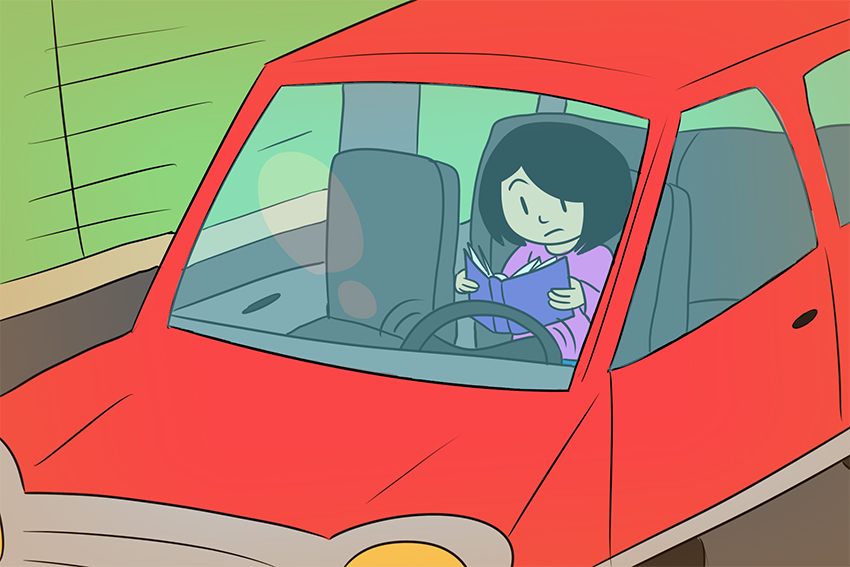Around 40 percent of Austin residents said they would pay for a driverless taxi service at least once a week, but only if it’s cheap, according to a new study on self-driving cars from the UT department of civil, architectural and environmental engineering.
Study author Prateek Bansal, a graduate student at Cornell University who got his masters in transportation engineering at UT, asked 347 people living in Austin how much they would pay for different types of self-driving technology.
If Austin deployed shared autonomous vehicles, or driverless ride-hailing programs, Bansal said that each self-driving car could replace nine conventional vehicles.
“There will be a street size reduction because now these vehicles are operating for 18 hours,” Bansal said. “There will be a requirement of less parking spaces because there will be less need to operate.”
Despite the implications for Austin traffic, participants were worried about equipment failures in the cars but thought that using autonomous cars would lead to fewer crashes overall, according to the study.
An overwhelming majority — 94 percent — of crashes are caused by human error, according to the National Highway Safety Administration.
Austinites were more likely to use driverless services on a weekly basis at cheaper rates — 41 percent were willing to pay for rides at $1 per mile, down to only 4 percent at $3 per mile.
In a poll of 50 students on UT campus, 64 percent said they would use a self-driving car service as a competitor to current services, such as Uber or Lyft.
Students in favor of the system said that they would use it for convenience and to save on costs, while students who wouldn’t use driverless cars cited safety concerns and said they’d be more comfortable with a human driver.
Plan II senior Jillian Herstein said that because current self-driving technology isn’t foolproof yet, she would prefer to have someone who could take control in an emergency.
“As much as we rely on and trust computers today, right now I think I’d be more comfortable with an actual driver,” Herstein said.
Civil engineering professor Kara Kockelman, who coauthored the study, said that new policy requirements might help bolster adoption rates.
“Just like we outlawed the horse and buggy, we will be probably outlawing conventional or dumb vehicles at some point,” Kockelman said. “For example, downtowns may say, ‘We don’t want any other pedestrians dying; we are only allowing self-driving vehicles downtown.’”
Kockelman added that while enforcement can be tricky, potential problems, such as congestion, will be reduced by introducing these new policies.
Kockelman proposed something called credit-based congestion pricing, in which everyone gets a certain budget to spend on driving, and distance is measured through a car’s GPS system.
Bansal also asked the survey takers what level of automation they’d pay for in their own cars.
Austinites were more willing to pay for expensive, more complete automation than for cars with drivers that can take control in case of emergency, according to the study.
However, large amount of people still said they wouldn’t pay for self-driving technology. In a Texas-wide study, Bansal and Kockelman found that almost 60 percent of responders wouldn’t pay for full automation at any price.
Bansal said that by 2045, 90 percent of households in the U.S. will have cars that control at least one aspect of driving, such as blind spot recognition. He said he expects that one quarter of Americans will have fully autonomous cars by that point but that these numbers will jump as prices decrease and consumer interest increases.
“People’s perceptions about these cars change along with the prices,” Bansal said. “We can hope that there will be a shift in the perception because people will start realizing, ‘Oh, this is happening.’”















